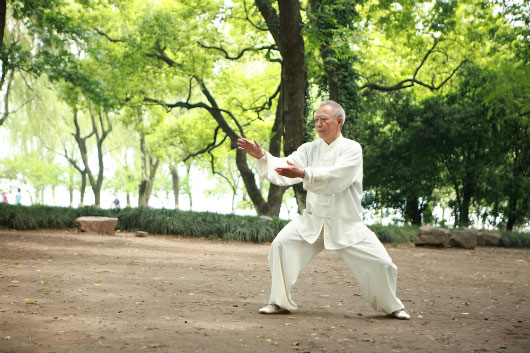Some Suitable Exercises for People with Diabetes
For people with diabetes, exercise is particularly important because this habit can help control blood sugar levels.
Contents
Benefits of Exercise for People with Diabetes
In addition to medication, lifestyle changes also play an important role in controlling diabetes. Among these, regular exercise can bring many benefits:
- Increase Muscle Mass: This helps increase the storage capacity of glycogen, a form of glucose stored by combining multiple glucose molecules. These glycogens are then converted back into glucose and enter the bloodstream when hungry, helping to prevent low blood sugar.
- Stabilize Blood Sugar: Exercise helps muscles function, making it easier for glucose to pass through cell membranes by reducing insulin resistance, thereby reducing blood sugar levels.
- Improve Overweight and Obesity: Reducing bad cholesterol levels (LDL-Cholesterol), increasing good cholesterol levels (HDL-Cholesterol), protecting and enhancing heart health.
- Combat Insulin Resistance: Exercise increases insulin sensitivity. As a result, cells can efficiently use available insulin to absorb glucose.
Additionally, exercise helps release endorphins, a type of “happy” hormone, which reduces pain and stress, benefiting the mental health of people with diabetes.

Some Very Good Exercises for People with Diabetes
Walking
Walking is one of the easiest forms of exercise to implement. Some studies have shown that for people with type 2 diabetes, walking for 15 minutes after each meal can help better control blood sugar levels. Moreover, walking helps reduce blood pressure, HbA1c levels, and body mass index. You can walk outdoors or up and down stairs indoors. Each day, you can spend 30 minutes walking and try to maintain it 5 days a week.
Yoga
Yoga is a form of exercise that helps increase muscle strength, flexibility, and balance. According to the American Diabetes Association (ADA), yoga can improve blood sugar levels by increasing muscle mass through training.
Tai Chi
This is a gentle exercise with gentle movements that help relax both the body and mind. Studies have shown significant improvements in blood sugar levels after people with diabetes complete some tai chi sessions. Moreover, after practicing, the spirit of people with diabetes becomes more cheerful and lively.

Swimming
Water activities help the body move without putting much pressure on the joints, making them suitable for people with diabetes. According to scientific research, to burn calories effectively and reduce bad cholesterol in the blood, you should swim at least 3 times a week, each time for at least 10 minutes, gradually increasing the duration of exercise.
Dancing
For people with diabetes, dancing is an interesting discipline to increase physical activity, flexibility, and contribute to improving memory through remembering dance steps. Especially, this discipline also helps with weight loss. For a person weighing 68kg, dancing for 30 minutes can burn up to 150 calories.
Strength Training Exercises (Resistance Bands, Weightlifting…)
In addition to the exercises above, to increase muscle strength, you can combine movement with weights or resistance bands. According to a 2018 study, in addition to increasing endurance and muscle mass, strength training exercises also contribute to stabilizing blood sugar.
Some Notes When Exercising
Maintaining moderate physical activity habits will help support and manage diabetes well. However, you should also note some points when performing exercises, especially consulting with experts if you are facing some diabetes complications:
- People with peripheral neuropathy should choose suitable shoes when exercising and check their feet daily to prevent and detect foot ulcers. Similarly, for people with proliferative retinopathy, they should avoid heavy forms of exercise such as contact sports, weightlifting, or deep water diving.
- Exercise 5 days a week, preferably regularly every day of the week and should not skip exercising for 2 consecutive days. If you don’t have time, you can break down your workouts, for example, walk 10 minutes each time evenly after meals instead of 30 minutes each time.
- Pay attention to check blood sugar levels before, during, and after exercise. Do not exercise when you feel hungry or tired to avoid low blood sugar, especially for those using insulin or insulin-stimulating drugs.
In addition to exercising, maintaining a balanced diet is equally important. To effectively manage diabetes, you should combine a variety of food groups in your diet such as fiber-rich foods, protein, carbohydrates, fats, vitamins, and minerals with a reasonable portion size. At the same time, limit saturated fat foods, refined carbohydrates, and high-sugar foods such as cakes, candies, and soft drinks.

In addition, you can also consider using specialized products for people with diabetes. These products are designed to provide full and balanced nutrition for people with diabetes with advanced carbohydrate systems, supplemented with myo-inositol and a mix of good monounsaturated fatty acids (MUFA) and polyunsaturated fatty acids (PUFA), helping to control blood sugar levels and improve heart health.
Increasing physical activity can bring many benefits to people with diabetes. Therefore, you should try to maintain regular exercise, while trying to choose suitable forms of activity, such as walking (a convenient form of exercise in terms of time and cost) to maintain in the long run.
See more:





